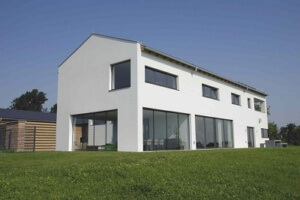 Jeff Richards, Sika Product Manager, discusses the advantages of structural glazing…
Jeff Richards, Sika Product Manager, discusses the advantages of structural glazing…
It stimulates the eye and mind, it enhances well-being, is free and doesn’t require electricity. There is no denying that natural light is a fundamental element of contemporary architecture. From energy savings and improved occupant comfort to greater productivity in commercial applications, the positive effect of daylight is a widely acknowledged fact across the construction industry.
It’s a proven fact that natural light plays a crucial role in sustainable design and glazing is one of the few constants in every building. Glass allows more light into a building which leads to naturally-lit interiors, improved thermal performance and most importantly – more contented occupants. Over the years as more and more research proves that natural light improves well-being and productivity there has been a desire for larger expanses of glazing. With this comes the aesthetic demand for slimmer, less obtrusive frames.
Structurally-glazed systems offer one method of achieving large expanses of glazing. In Europe, especially, there is more of a trend towards structural glazing. The technology on the continent is more advanced which helps fulfil the greater demand. However, with the UK government pledging to reduce greenhouse gas emissions by at least 80% by 2050, the pressure is on to improve the thermal performance of new commercial and private buildings across the UK and an increasing number of architects and housebuilders are opting for structural glazing.
Traditional structural glazing has featured steel reinforcement but there is an increasing trend towards adhesives solutions when it comes to bonding glass inside window frames or sashes. There are a number of aesthetic and thermal gains to be had by adopting this method.
Firstly, when glass is chemically adhered to a frame it means the PVC or metal frames themselves do not need to be as big which therefore allows more light into a building. The adhesive provides an incredibly strong bond to the frame, helping reduce the need for larger sashes, which also allows more light through.
With structurally-bonded glass negating the need for steel reinforcement in frames, it prevents cold bridging between the building’s exterior and interior, thus improving a building’s thermal envelope.
Structural bonding not only increases thermal efficiency it saves on costs incurred by the steel within the frame. There is also the question of long-term performance. Glass can shift or twist within a steel frame over time due to the constant opening and closing of windows, leading to distortion which can make the opening and closing operation quite difficult. In Europe particularly, this issue was found to be successfully addressed by the use of structural bonding as the glass remains strong and immoveable.
By reducing the size of window frames and sashes, structural bonding is a boon to architects, giving them more of a freehand in terms of design. It means windows can play a stylish, as well as functional role in a building’s make-up.
Different bonding systems are available, depending on the window system being fitted. Sika’s Sikasil Window Technology (WT) range provides a solution, offering excellent adhesion to most relevant substrate as well as outstanding UV and weathering resistance, flexibility over a wide temperature range and long-term durability.
With a continued reliability on glass, modern structural glazing systems featuring modern bonding systems will enable architects and contractors to fulfil four vital requirements – improved aesthetics; increased light; better thermal performance and, most importantly, happier occupants.

